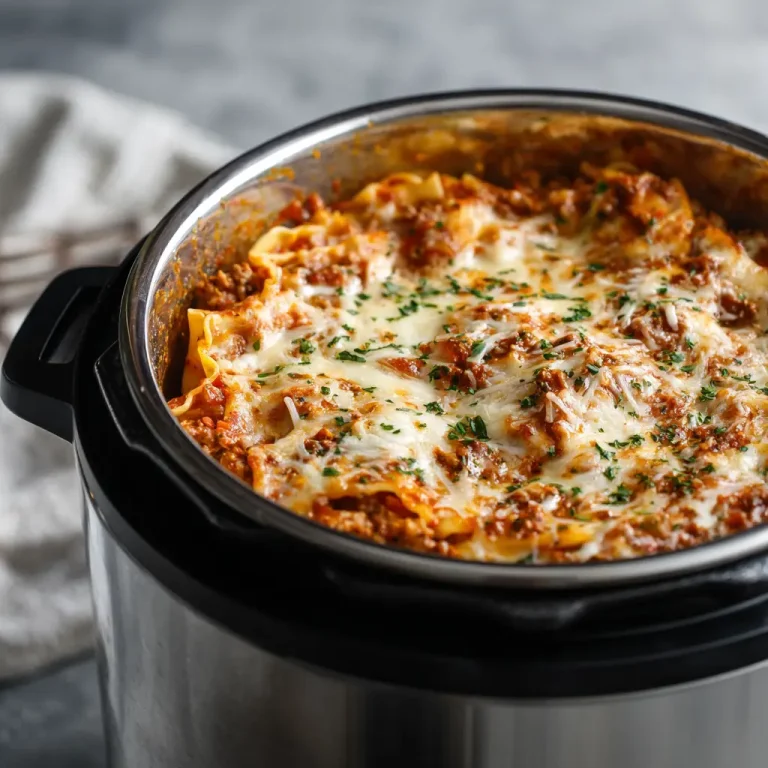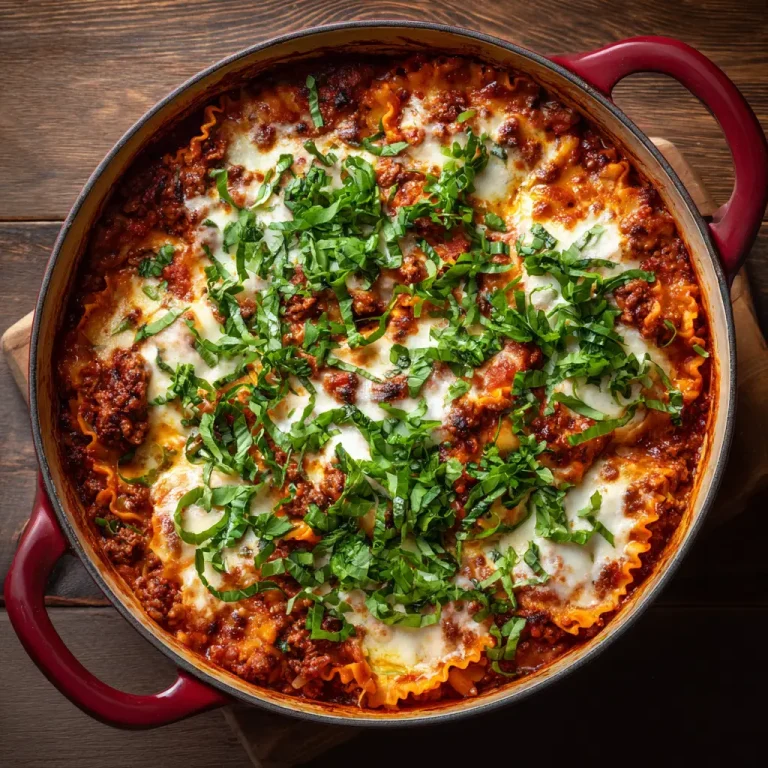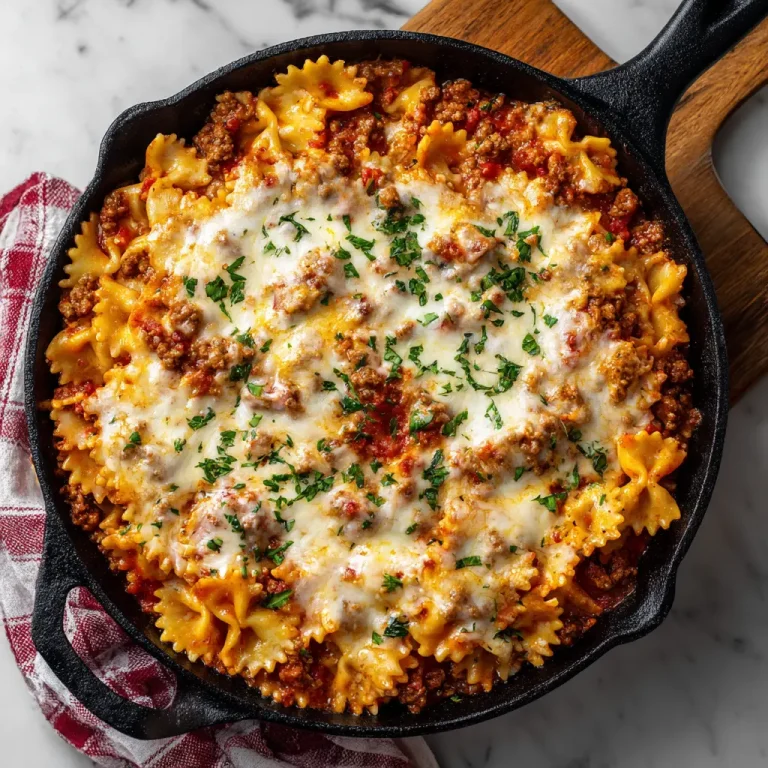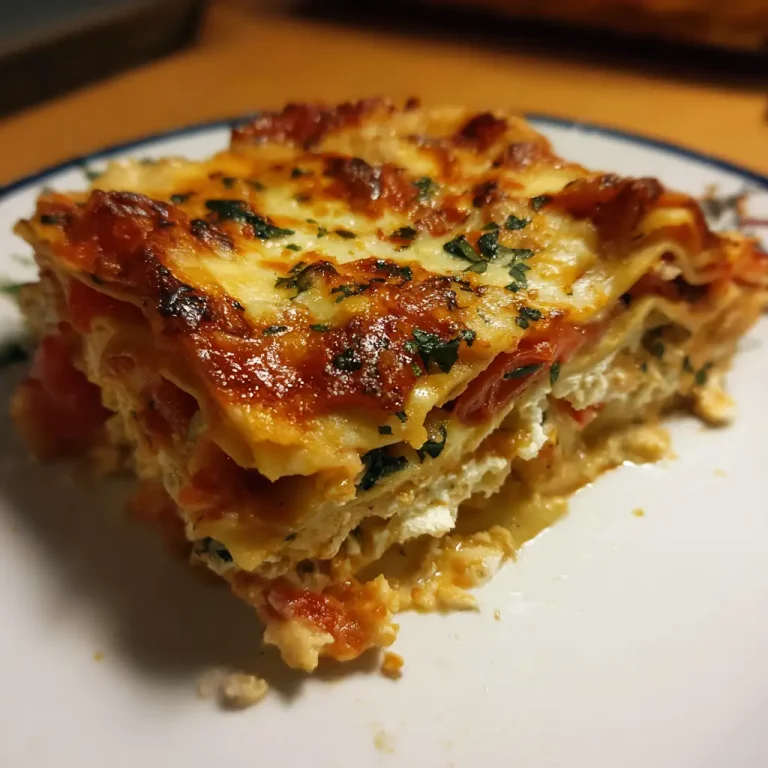Gluten Free Lasagna Recipe: Easy, Delicious, and Family-Friendly
Introduction
Lasagna ranks among the most comforting, crowd‑pleasing dishes in the world. When someone mentions layers of pasta, cheese, sauce, and a golden top, you imagine decadence. But for people who avoid gluten, traditional lasagna can be off limits. A well made gluten free lasagna, however, delivers the same heartiness, flavor, and satisfaction — without the digestive worries.
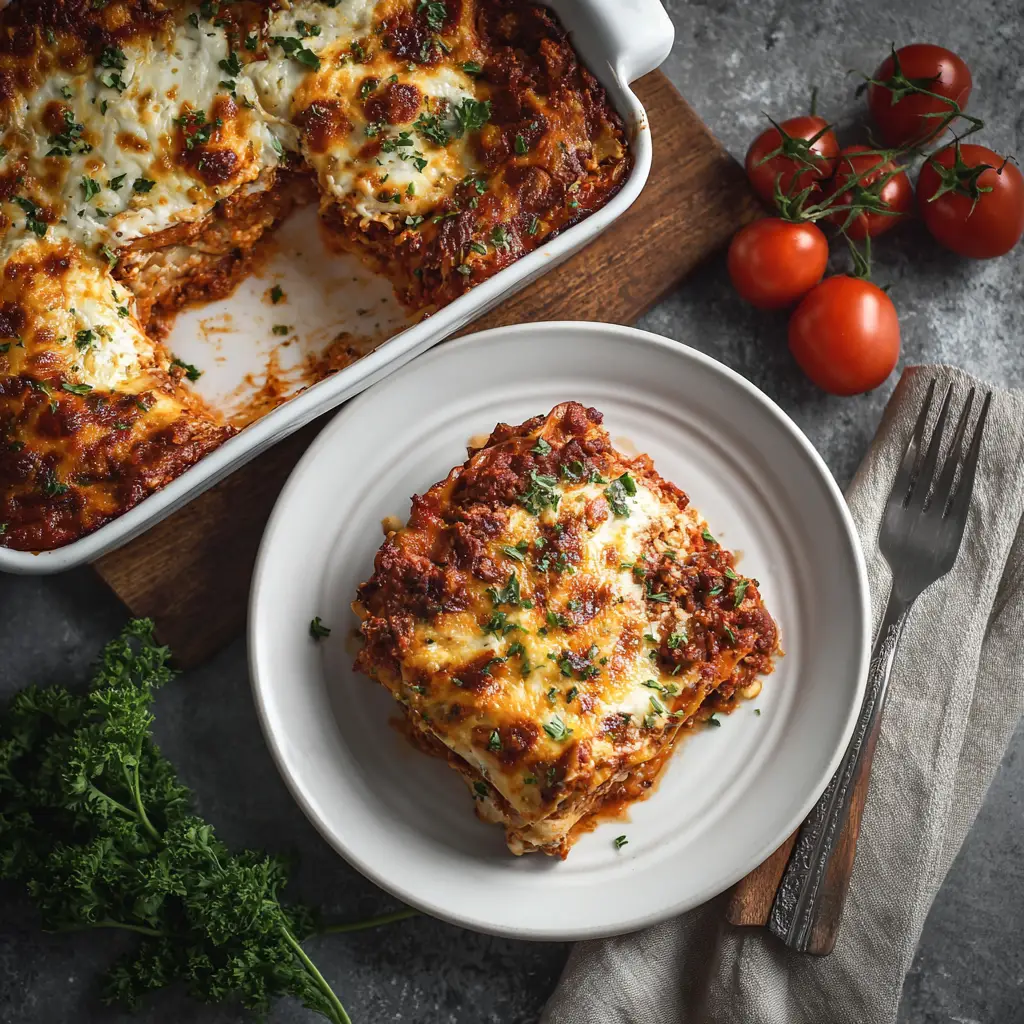
Many assume gluten free means bland or limiting. I disagree. With the right ingredients and methods, you can build a lasagna that rivals any wheat‑based version. You can layer tender gluten free pasta (or alternatives), savory meat or vegetable sauce, creamy cheese mixtures, and bake until bubbling. The trick lies in moisture balance, ingredient timing, and quality gluten free substitutes. In this article I will walk you through a complete, reliable gluten free lasagna recipe. You will learn what ingredients work best, how to layer and bake, how to adjust it to your taste, and what nutrition you get from it. Whether you are cooking for someone with celiac disease or simply exploring wheat‑free options, this gluten free lasagna will feel like a treat rather than a compromise.
Ingredients Needed
Below is a suggested ingredient list for a classic meat and cheese gluten free lasagna. Quantities assume a 9×13 inch baking dish and about 8 servings. Calorie counts are approximate and based on widely used brands or standard databases. Your brand choices may shift the numbers slightly.
| Ingredient | Approx Quantity | Estimated Calories* |
|---|---|---|
| Gluten free oven‑ready lasagna sheets | 9 to 12 sheets | ~ 270 kcal (for 90 g dry pasta) |
| Olive oil | 2 tablespoons | ~ 240 kcal |
| Ground turkey (lean) or ground beef | 500 g | ~ 800 kcal |
| Onion, diced (medium) | 1 | ~ 45 kcal |
| Garlic cloves, minced | 3 cloves | ~ 15 kcal |
| Crushed tomatoes (canned) | 28 oz (≈ 800 g) | ~ 160 kcal |
| Tomato paste | 2 tablespoons | ~ 30 kcal |
| Italian seasoning, dried | 2 teaspoons | ~ 10 kcal |
| Ricotta cheese (or substitute) | 400 g | ~ 600 kcal |
| Egg | 1 | ~ 70 kcal |
| Shredded mozzarella cheese | 300 g | ~ 750 kcal |
| Grated Parmesan cheese | ½ cup | ~ 100 kcal |
| Fresh parsley, chopped | 2 tablespoons | negligible kcal |
| Salt & pepper | to taste | negligible |
* Totals do not include optional extras or customization. Based on typical values; for example many gluten free pasta brands list ~150 kcal per 56 g dry serving.
When combined across all ingredients, the full lasagna yields roughly 3000–3500 kcal for the entire dish. Dividing into eight portions gives about 375–450 kcal per serving, depending on layer thickness, fat content of meat, and cheese used. (Some premade gluten free lasagna versions also report ~ 400 kcal per cup serving)
Step‑by‑Step Cooking Instructions
Follow these steps carefully to build a stable, delicious gluten free lasagna. Precise timing helps ensure the pasta layers cook through without turning gummy or dry.
- Preheat the oven to 190 °C (375 °F). Grease your baking dish lightly with olive oil.
- Prepare the meat sauce.
- Heat 1 tablespoon olive oil in a large skillet over medium heat.
- Add diced onion and sauté until translucent (2‑3 minutes).
- Add minced garlic and cook briefly until fragrant.
- Add ground turkey or beef. Break it apart and cook until browned and fully cooked through.
- Stir in crushed tomatoes and tomato paste.
- Add Italian seasoning, salt, and pepper. Let the sauce simmer for 10 minutes, stirring occasionally, to thicken slightly.
- Make the cheese mixture.
- In a bowl combine ricotta cheese, beaten egg, chopped parsley, salt, and pepper.
- Stir until smooth and cohesive.
- Layering.
- Spread a thin layer (about one quarter of the meat sauce) across the bottom of the baking dish.
- Lay a single layer of gluten free lasagna sheets (usually 3 sheets side by side if your dish width allows).
- Spread one third of the ricotta mixture evenly over the pasta.
- Add another layer of meat sauce (another third).
- Sprinkle a portion of shredded mozzarella.
- Repeat the layering (pasta → ricotta → sauce → mozzarella) until you use up ingredients, finishing with a final layer of meat sauce and the last mozzarella plus Parmesan on top.
- Cover and bake.
- Cover the dish loosely with aluminum foil (or a lid). Bake for about 30 minutes.
- Remove the cover and bake another 10–15 minutes until cheese is melted, edges bubble, and top is lightly golden.Pair this meal with Instant Pot Lasagna_ for a complete experience.
- Rest before cutting.
- Turn off the oven and let the lasagna rest in the oven (door slightly ajar) or on the countertop for 10 minutes.
- This resting helps the layers set so slices remain intact when you cut.
- Serve.
- Use a sharp knife to cut into portions. Serve warm.
- Garnish with extra fresh parsley or basil if desired.
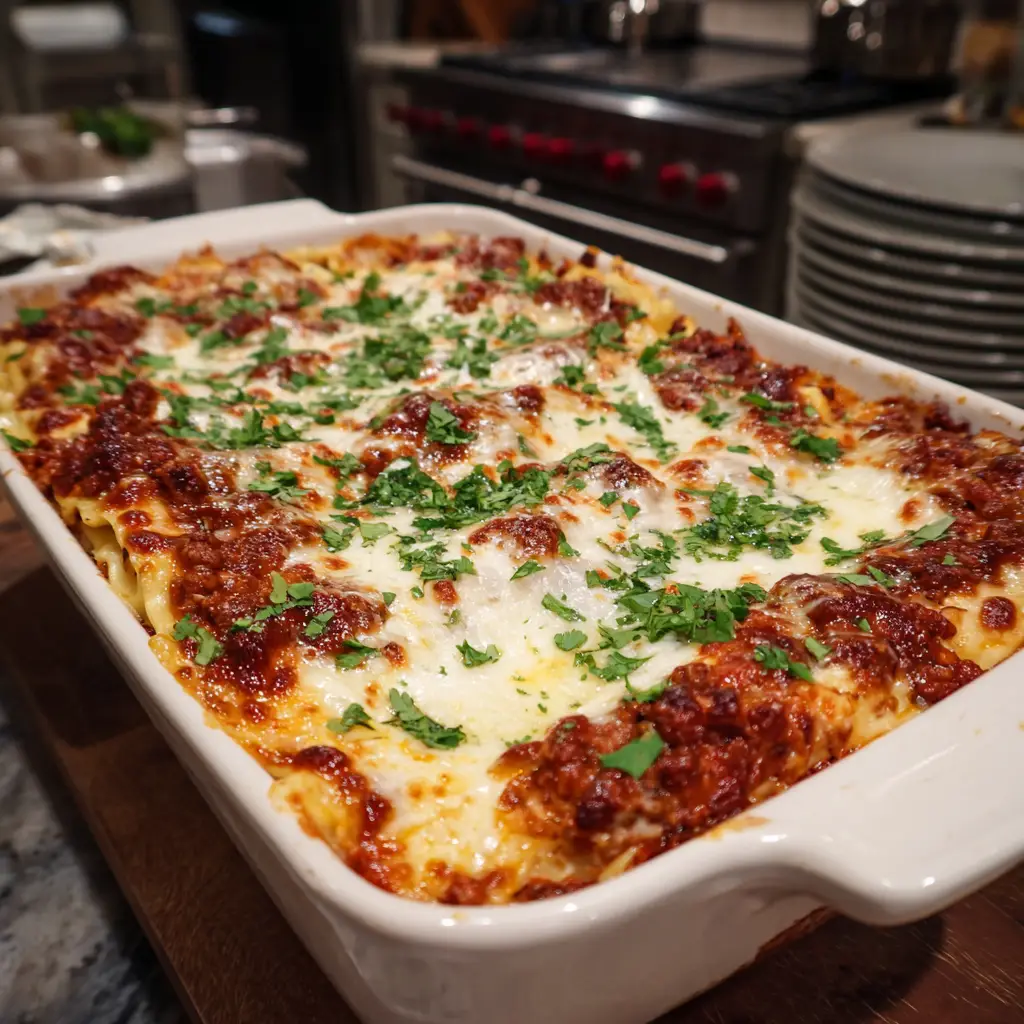
Tips for Customizing the Recipe
You can adapt this gluten free lasagna in many ways to suit your dietary preferences or ingredient availability.
- Vegetarian or plant‑based version. Replace meat with sautéed vegetables like mushrooms, zucchini, bell pepper, spinach, or eggplant. Use a plant‑based ground “meat” alternative. Substitute ricotta with tofu ricotta or cashew cheese and use vegan mozzarella.
- Lower carb adaptation. Use thin slices of zucchini or eggplant in place of pasta sheets. Salt and drain them to reduce moisture first so they don’t release excess water.
- Cheese swaps. Try cottage cheese or part‑skim ricotta to reduce fat. Mix in shredded goat cheese or feta for tang. Use a blend of cheeses like mozzarella + provolone to vary texture.
- Spice it up. Add red pepper flakes, chopped jalapeño, or smoked paprika to the meat sauce for heat. Fresh basil or oregano brighten flavor.
- Gluten free pasta brands. Choose sturdy oven‑ready sheets made from rice, corn, or blends. Some will soften evenly without pre‑cooking. Test one sheet early to judge moisture needs.
- Make ahead / freezing. You can assemble the lasagna in an airtight container and refrigerate overnight. Bake fresh when needed. Or freeze the baked dish (before final browning) for up to three months. Thaw in fridge, then bake at 175 °C (350 °F) for 25‑30 minutes before finishing uncovered.
- Prevent dryness. If sauce is too thick, stir in a little water or chicken broth to give it more moisture. Gluten free pasta absorbs liquids more rapidly than wheat pasta, so err on the side of a slightly wetter sauce layer.
- Ensure even baking. Use a glass or ceramic dish rather than a very deep metal one. That helps heat circulate. Also place the dish on a baking sheet to prevent spills.
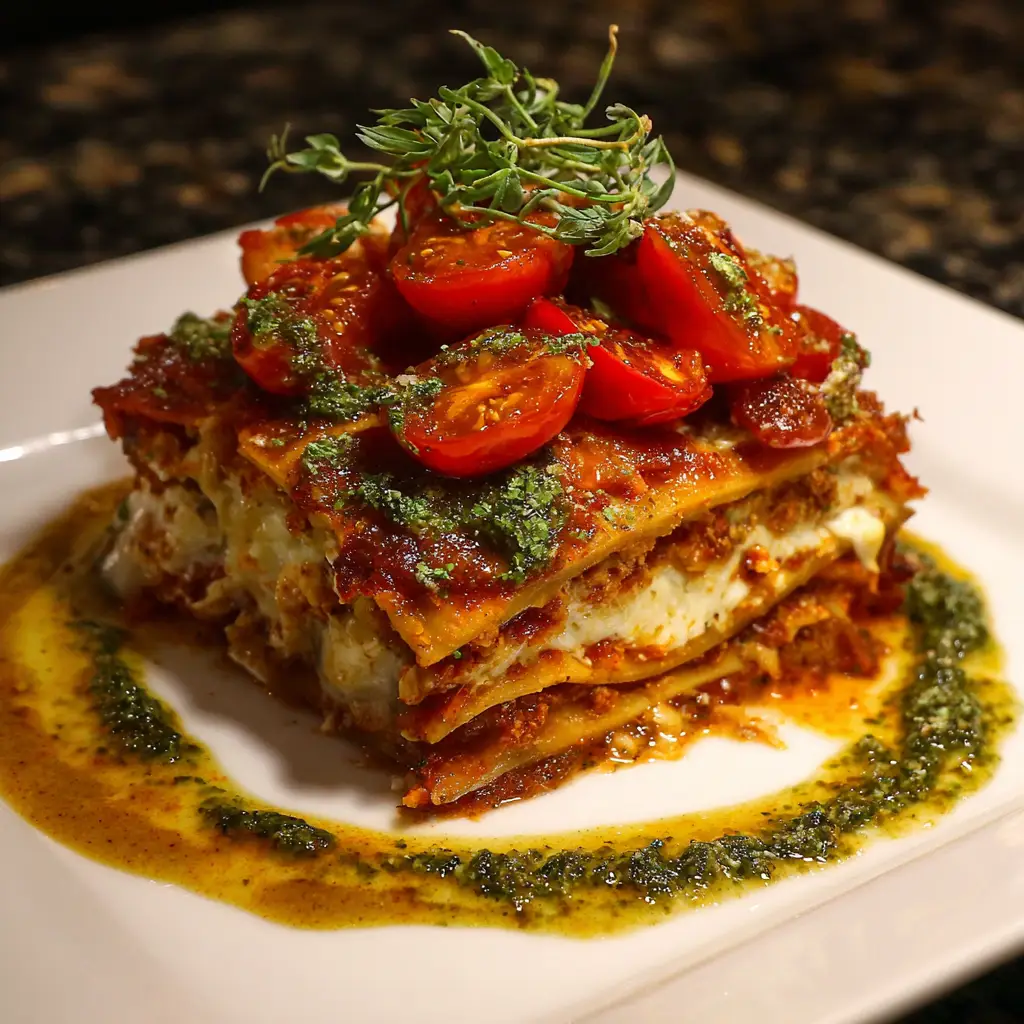
Nutritional Information
Below is an approximate nutritional summary per one serving (1/8 of the dish), based on the ingredient table and method above. Keep in mind your actual values will vary with product choices and portion sizes.
| Nutrient | Approx Amount per Serving |
|---|---|
| Calories | ~ 400 kcal |
| Protein | ~ 25–30 g |
| Carbohydrates | ~ 30–35 g |
| Dietary Fiber | ~ 2–4 g |
| Total Fat | ~ 16–20 g |
| Saturated Fat | ~ 6–8 g |
| Cholesterol | ~ 70–90 mg |
| Sodium | ~ 500–800 mg (depending on salt, tomato products) |
| Calcium | moderate amount (from cheese) |
| Iron | modest (from meat and pasta) |
For comparison, a packaged gluten free lasagna with meat sauce lists ~ 400 kcal per cup serving. A garden vegetable gluten free lasagna version has been measured at ~ 290 kcal for 291 g serving.
If you want to reduce calories, you can lighten cheeses, use leaner meat or skip meat, or add more vegetables to lower the per serving energy density.
Serving Suggestions
Pairing this gluten free lasagna with complementary side dishes can elevate the meal:
- Salad. A crisp green salad (e.g. mixed greens, arugula, spinach) tossed with lemon vinaigrette or balsamic dressing cuts through the richness.
- Gluten free garlic bread. Use gluten free baguette or rolls brushed with olive oil, garlic, parsley, and toasted under the broiler.
- Steamed or roasted vegetables. Light vegetables like broccoli, asparagus, green beans or zucchini make a fresh balance.
- Soup starter. A light tomato basil soup or minestrone (ensure gluten free) works well as a warm first course.
- Herb garnish. Fresh basil leaves, parsley, or even basil pesto (gluten free) drizzled on top lends aroma and flavor.
- Wine pairing. A medium red wine (like Sangiovese or Merlot) or a crisp white (Pinot Grigio) pairs well with tomato sauce and cheese richness.
When serving, cut neat squares and allow each plate to warm slightly. A small side salad keeps the portion balanced. Leftovers reheat well in oven (covered, then uncovered to crisp top) or in microwave.
Gluten Free Lasagna Recipe: Easy, Delicious, and Family-Friendly
Course: Blog8
servings20
minutes45
minutes~400
kcalIngredients
Gluten free lasagna sheets – 9 to 12 (oven-ready)
Olive oil – 2 tablespoons
Ground turkey or lean ground beef – 500 g
Onion – 1 medium, diced
Garlic – 3 cloves, minced
Crushed tomatoes (canned) – 800 g (28 oz)
Tomato paste – 2 tablespoons
Italian seasoning – 2 teaspoons
Salt and black pepper – to taste
Directions
- Preheat oven to 375°F (190°C). Lightly grease a 9×13 inch baking dish.
- Cook the meat sauce:
- In a skillet, heat 1 tablespoon olive oil.
- Add diced onion and sauté until soft. Add garlic and cook for 30 seconds.
- Add ground meat and cook until browned.
- Stir in crushed tomatoes, tomato paste, Italian seasoning, salt, and pepper. Simmer for 10 minutes.
- Make the cheese filling:
- In a bowl, mix ricotta cheese, egg, and chopped parsley. Season with a pinch of salt and pepper.
- Assemble the lasagna:
Recipe Video
Notes
- o-boil pasta tip: If your gluten free pasta is not oven-ready, cook it slightly under al dente before layering.
Meat alternatives: Use plant-based ground or cooked lentils for a vegetarian option.
Dairy-free version: Swap ricotta and mozzarella with non-dairy cheese alternatives.
Frequently Asked Questions about Gluten Free Lasagna
Q. Do I need to pre‑cook gluten free lasagna sheets before layering?
Not always. Many gluten free oven‑ready sheets are designed to cook in the lasagna itself. If your brand requires pre‑cooking, follow its package directions, but undercook slightly so they finish in the oven.
Q. Why does gluten free lasagna sometimes turn mushy?
Overly long baking or too much sauce can make gluten free pasta disintegrate. Also sheets that are too fragile or made from only one flour (like only rice) may break down. Use sturdy blends, layer carefully, and rest before cutting.
Q. Can I make a dairy‑free version?
Yes. Substitute ricotta with blended cashews or tofu, and use certified gluten free vegan mozzarella or nut based cheeses. Use non dairy milk if making a bechamel alternative.
Q. How long does leftover gluten free lasagna keep?
Store in the fridge in airtight container for up to 3 days. Reheat portions in oven or microwave. You can also freeze slices or the entire dish (pre‑browned) for up to 3 months.
Q. Can I substitute zucchini or eggplant for pasta sheets?
Yes. Thin slices of zucchini or eggplant work well, especially for a lower carb option. Salt and drain them first to prevent excess moisture. Alternate veggie slices with sauces and cheese layers.
Conclusion
Homemade gluten free lasagna can become one of your most satisfying comfort meals. With the right combination of oven ready pasta, a flavorful sauce, and creamy cheese layers, you do not lose the essence of traditional lasagna. Customization allows you to make it vegetarian, lower in fat, or even dairy free. The key is careful layering, managing moisture, and letting the dish rest before slicing.


